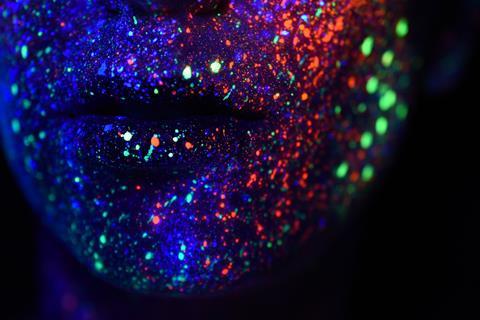Scientists at Nagoya City University have investigated the inactivation efficacy of different UV wavelengths and assessed the safety profile for effective management of COVID-19 risks.

The global outbreak of severe acute respiratory syndrome coronavirus 2 (SARS-CoV-2) and its new variants has created a need for effective disinfection technologies to protect against harmful pathogens. While vaccines offer some protection, their effectiveness against future variants is uncertain. Therefore, additional strategies are important during the pre-vaccine stage.
UV irradiation has lately emerged as a safe, effective, and convenient strategy to inactivate and eliminate disease-causing micro-organisms. The wavelength range of 200-235 nm, often referred to as far-UVC, is being increasingly investigated as a novel disinfection wavelength.
Effects on cells
Even though it has been shown to be harmless to mammalian cells due to the strong absorption effect of the stratum corneum layer, the safety of UV irradiation on mammalian cells is not well-established, and there are concerns that high levels of far-UVC light can cause damage to the skin cells.
Further, available study data has significant inconsistencies that might be caused by the differences in both the strains of SARS-CoV-2 and experimental conditions such as the spectrum of the light sources.
To address these issues, Prof. Takahiro Matsumoto from the Graduate School of Design and Architecture, Nagoya City University, along with his team, conducted systematic experiments using varying UV wavelengths without variance in other experimental conditions.
The dedicated team of scientists included Prof. Makoto Tomita from Shizuoka University, Prof. Tadao Hasegawa from Nagoya City University, and Prof. Yasuhito Tanaka from Kumamoto University, among others. Their study was published online in Scientific Reports.
Omicron variants
To explore the interaction of UV rays with two omicron variants of coronavirus, the team conducted a series of experiments. First, they isolated omicron BA.2 and BA.5 variants of SARS-CoV-2 from the infected cells (VeroE6/TMPRSS2). Next, they subjected the isolated omicron BA.2 and BA.5 variants to UV irradiation across a range of wavelengths, specifically ranging from 200 to 260 nm.
For each wavelength, varying doses of UV irradiation, ranging from 0 to 18 mJ/cm2, were applied. The inactivation rate constant–which quantifies effectiveness of the treatment—was calculated by using two methods, TCID50 (tissue culture infectious dose) and qPCR (quantitative polymerase chain reaction).
The study showed that both omicron BA.2 and BA.5 variants have almost identical UV inactivation properties. Although the inactivation rates were highest at 260 nm, the rates obtained with 220 nm light were similar to those obtained with the former.
The findings highlight the potential of far-UVC light as a safe germicidal option. “The comparable inactivation efficacy between 220 nm and 260 nm light suggests that far-UVC light could be a promising and safe approach to mitigate airborne virus transmission,” concludes Prof. Matsumoto.
Scattering effect
Furthermore, it was found that the UV inactivation rate constants obtained in a liquid suspension were approximately 10 times lower than those previously obtained in an aerosol, suggesting the potential role of the Mie scattering effect in enhancing UV irradiance within aerosol droplets.
Additionally, the bacteria E. coli was used as a reference point to compare and understand the differences in inactivation and genome damage when compared to the SARS-CoV-2 omicron variants. The study found that, above 240 nm, both SARS-CoV-2 and E. coli exhibit similar sensitivities to UV light, indicating UV-induced inactivation primarily targets genes (DNA or RNA).
However, below 240 nm, significant differences were observed, which can be attributed to the difference in thickness of the protein layer covering DNA or RNA. Also, the spectral sensitivities obtained through TCID50 assays and qPCR assays indicated correlation between the two methods.
This study provides valuable insights into the UV susceptibility of SARS-CoV-2 omicron variants. The observed similarities in inactivation efficacy between 220 nm and 260 nm light, in combination with aerosols, suggest the potential use of far-UVC light for preventing airborne virus transmission in a safe and practical manner. The authors expect that these results will pave the way toward safe ultraviolet sterilization technologies in the near future.







No comments yet